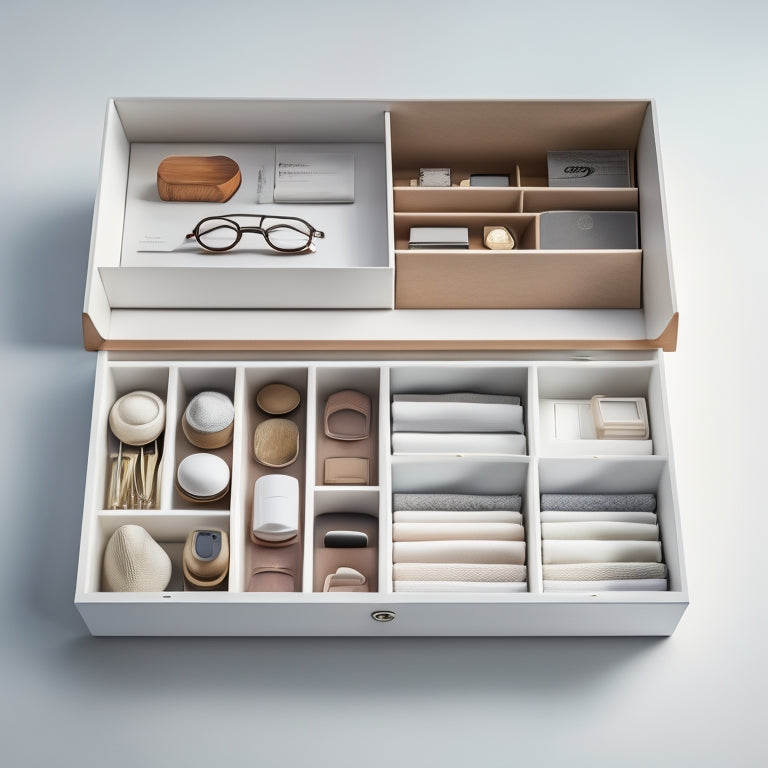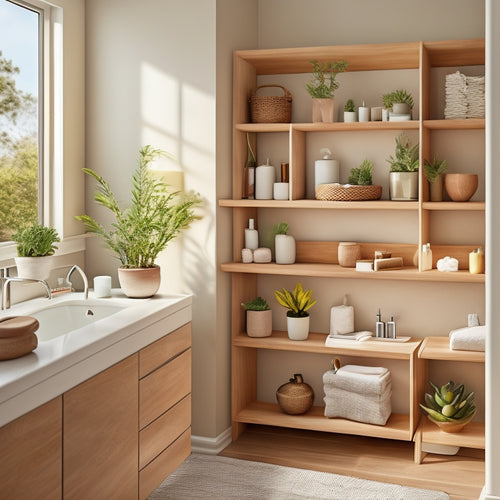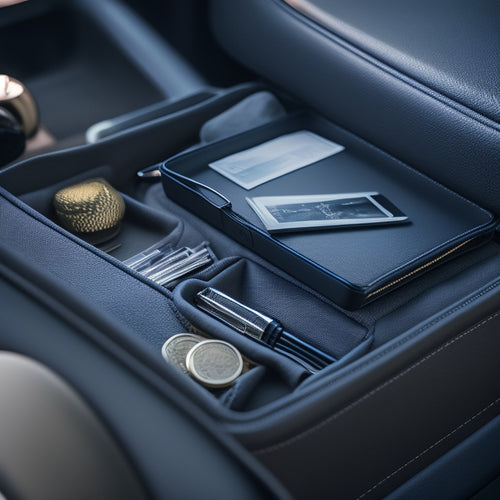
Simplifying Senior-Friendly Drawer Organization in 3 Steps
Share
To simplify your senior-friendly drawer organization in 3 steps, start by purging unnecessary items to create a clutter-free space that promotes ease of navigation. Next, optimize your drawer storage and flow by using dividers, storing frequently used items in accessible zones, and designating a 'launching pad' for grab-and-go items. Finally, implement accessible drawer systems that cater to your needs, incorporating ergonomic handles, adaptive dividers, and hardware that accommodates your physical abilities. By following these steps, you'll be well on your way to a more organized and accessible space; learn how to fine-tune your system to match your unique needs.
Key Takeaways
• Eliminate clutter by purging broken, outdated, or unused items from drawers to create a peaceful and organized space.
• Utilize drawer dividers or inserts to separate zones, store frequently used items in accessible zones, and implement a 'first in, first out' system.
• Choose ergonomic handles and adaptive dividers that cater to seniors' needs, ensuring effortless retrieval of items.
• Designate a 'launching pad' zone for grab-and-go items like keys, and store infrequently accessed items at the back of the drawer.
• Focus on accessible drawer systems that accommodate physical abilities, promoting ease of navigation and reducing feelings of anxiety and overwhelm.
Purge and Simplify Drawer Contents
Sort through your drawer's contents and get rid of anything broken, outdated, or no longer serving a purpose, as a clutter-free space is essential for senior-friendly organization.
Clutter psychology suggests that a cluttered environment can lead to feelings of anxiety and overwhelm, which can be particularly challenging for seniors.
By purging your drawer of unnecessary items, you'll create a more peaceful and organized space that's easier to navigate.
As you sort, consider your senior habits and what you truly need or use regularly. Be honest with yourself – if you haven't used it in the past year, it's likely safe to let it go.
This process may take some time, but it's vital for creating a senior-friendly space that promotes independence and confidence.
Optimize Drawer Storage and Flow
With your newly purged drawer contents, now it's time to rethink how you store and access the remaining items to maximize efficiency and ease of use. This is where Drawer Zoning comes in – a strategy that involves dividing your drawer into separate zones, each designated for a specific type of item. This approach helps you store similar items together, making it easier to find what you need quickly.
Here are some storage hacks to optimize your drawer storage and flow:
-
Use drawer dividers or inserts to separate zones and prevent clutter from building up again.
-
Store frequently used items in easy-to-reach zones, reducing strain on your back and joints.
-
Implement a 'first in, first out' system for items like socks or underwear, ensuring you use the oldest items first.
-
Designate a 'launching pad' zone for items you need to grab on the go, like your keys or wallet.
-
Utilize the back of the drawer for infrequently used items, keeping them out of the way but still accessible.
Implement Accessible Drawer Systems
You'll want to focus on implementing accessible drawer systems that cater to your needs, allowing you to effortlessly retrieve what you need without straining or struggling. This means selecting hardware that accommodates your physical abilities.
Consider installing ergonomic handles that are easy to grip and operate, reducing the strain on your hands and wrists. These handles come in various shapes, sizes, and materials, so choose ones that fit comfortably in your hand.
To maximize the functionality of your drawers, incorporate adaptive dividers that can be adjusted or rearranged as needed. These dividers help maintain a clutter-free environment, making it easier to find what you need quickly. They can also be used to separate items into categories, such as clothing, accessories, or kitchen utensils, keeping similar items together.
Frequently Asked Questions
How Often Should I Reorganize My Senior-Friendly Drawers?
As you navigate the seasons of life, think of your drawers as a garden that needs a Seasonal Refresh. Every 3-6 months, prune out clutter to keep your space Age Related, accessible, and peaceful, just like a well-tended garden in bloom.
Can I Customize Drawer Organizers for My Specific Needs?
You can definitely customize drawer organizers to fit your unique needs, measuring your space to guarantee flexibility and creating solutions tailored to your lifestyle, allowing you to maximize storage and minimize clutter.
Are Senior-Friendly Drawers Suitable for People With Disabilities?
Coincidentally, you're wondering if senior-friendly drawers are suitable for people with disabilities, and the answer is yes! These accessible living solutions provide Disability support, ensuring everyone can maintain independence and confidence in their daily routines.
Can I Use Baskets or Bins With Senior-Friendly Drawer Systems?
You can definitely use baskets or bins with senior-friendly drawer systems, offering flexible container options for customized storage solutions that cater to individual needs and preferences, enhancing accessibility and ease of use.
Are Senior-Friendly Drawers Only for Seniors, or Can Anyone Use Them?
You're not limited by age; senior-friendly drawers are a silver lining for everyone, offering universal appeal and intergenerational benefits - a harmonious blend of functionality, accessibility, and style that you'll appreciate in your daily life.
Related Posts
-

Space-Saving Bathroom Shelves With Open Design
Space-saving bathroom shelves with an open design can convert your compact space into a stylish sanctuary. By maximiz...
-

Waterproof Cabinet Storage for Small Bathrooms
Waterproof cabinet storage can revolutionize your small bathroom by providing effective organization while resisting ...
-

High Road Car Glove Box Organizer Review
The High Road Car Glove Box Organizer is a top-rated solution for keeping vehicle documents and essentials neatly org...


